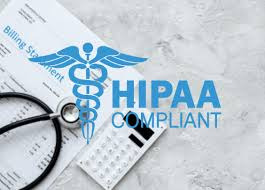#hipaaautomatedmails
Explore tagged Tumblr posts
Text
HIPAA Compliant Print & Mail: Enhancing Security for Health Providers
Healthcare providers handle a vast amount of sensitive patient data daily. As part of their operations, they must ensure that any printed or mailed information adheres to HIPAA regulations. Failure to comply can lead to security breaches, financial penalties, and legal issues.

This article discusses the significance of HIPAA-compliant print and mail processes for healthcare providers and how to enhance security while maintaining efficiency.
Why HIPAA Compliance Matters in Print & Mail
HIPAA sets strict requirements for protecting patient information, including documents sent via mail. Healthcare providers must:
Prevent unauthorized disclosure of PHI.
Ensure secure printing, mailing, and storage of sensitive data.
Implement robust tracking systems for compliance.
Report security breaches promptly.
Common Print & Mail Security Risks
Human Errors: Address mix-ups, incorrect enclosures, and misplaced mail.
Unauthorized Access: Exposure of printed materials to unauthorized individuals.
Data Breaches: Stolen or intercepted mail containing PHI.
Lack of Auditability: Difficulty in tracking document handling and mailing.
Essential Strategies for HIPAA-Compliant Print & Mail
To mitigate risks, healthcare providers should adopt the following security-enhancing measures:
1. Secure Printing Protocols
Restrict access to PHI-printing areas.
Use secure printers with authentication mechanisms.
Encrypt digital print jobs to prevent unauthorized interception.
2. Error-Free Mail Processing
Utilize automated document processing to avoid human errors.
Implement address verification tools before mailing sensitive data.
Incorporate barcode tracking to monitor mail delivery status.
3. Physical and Digital Security Measures
Store printed PHI documents in locked, access-controlled rooms.
Implement strict shredding policies for document disposal.
Maintain an electronic record of all print and mail activities.
4. Compliance Audits and Employee Training
Conduct regular compliance assessments to identify gaps.
Train employees on secure handling of printed and mailed PHI.
Maintain detailed logs for accountability and audits.
5. Work with HIPAA-Compliant Vendors
Partner with vendors offering secure print and mail solutions.
Ensure vendors provide BAAs and compliance certifications.
Verify vendors’ data security and encryption protocols.
Benefits of HIPAA-Compliant Print & Mail Services
Healthcare providers who invest in HIPAA-compliant print and mail solutions can experience several benefits:
Reduced Risk of Data Breaches: Strengthened security measures prevent unauthorized PHI disclosure.
Improved Efficiency: Automation reduces human errors in printing and mailing processes.
Regulatory Compliance: Ensures adherence to HIPAA guidelines, avoiding penalties.
Better Patient Trust: Secure handling of PHI fosters patient confidence in healthcare providers.
Conclusion
Healthcare providers must prioritize HIPAA compliance in their print and mail processes to safeguard patient data and maintain regulatory adherence. By implementing secure printing, error-free mailing, physical security, and compliance audits, providers can significantly reduce security risks. Partnering with HIPAA-compliant vendors further ensures best practices in secure document handling. Investing in compliance today protects patients and healthcare organizations in the long run.
youtube
SITES WE SUPPORT
HIPAA Automated Mails – Wix
1 note
·
View note
Text
Achieving HIPAA Compliance in Your Print and Mail Processes
The Health Insurance Portability and Accountability Act (HIPAA) sets strict guidelines for protecting sensitive patient information. Organizations handling Protected Health Information (PHI), including healthcare providers, insurers, and business associates, must ensure that their print and mail processes comply with HIPAA regulations. Failure to do so can result in severe penalties, reputational damage, and legal action.

In this article, we will explore the key aspects of achieving HIPAA compliant mailing processes, best practices to secure sensitive data, and how organizations can mitigate risks while maintaining efficiency.
Understanding HIPAA Compliance in Print and Mail
HIPAA compliance involves adhering to the Privacy Rule, Security Rule, and Breach Notification Rule to safeguard patient information. When it comes to printing and mailing PHI, specific regulations apply:
Privacy Rule: Requires organizations to protect PHI from unauthorized access and disclosure.
Security Rule: Mandates administrative, physical, and technical safeguards to ensure data security.
Breach Notification Rule: Obligates covered entities to report security breaches affecting PHI.
Any organization that prints or mails documents containing PHI must establish protocols to comply with these rules.
Key Risks in Print and Mail Processes
Traditional print and mail operations pose several risks to HIPAA compliance, including:
Unauthorized Access: Improper handling of printed materials can expose PHI to unauthorized individuals.
Misdirected Mail: Errors in mailing addresses or envelope stuffing can result in PHI being sent to the wrong recipient.
Insecure Storage and Disposal: Storing or disposing of printed materials without security measures can lead to data breaches.
Lack of Audit Trails: Without tracking and monitoring mechanisms, organizations may struggle to demonstrate compliance in the event of an audit.
Best Practices for HIPAA-Compliant Print and Mail
To minimize risks and ensure compliance, organizations should implement the following best practices:
1. Implement Secure Printing Practices
Use authorized personnel for handling PHI-related printing tasks.
Employ secure print release technology to prevent unauthorized document access.
Utilize encryption and password protection for digital print jobs.
2. Ensure Accurate Mailing Processes
Implement automated address validation to reduce mailing errors.
Use barcoded tracking systems for mail pieces containing PHI.
Conduct double-check procedures to prevent mismatched patient information.
3. Secure Storage and Disposal of Printed Materials
Store PHI-containing documents in locked, access-controlled areas.
Use shredding or certified document destruction services for proper disposal.
Maintain a retention policy that complies with HIPAA regulations.
4. Establish Audit Trails and Monitoring
Use document tracking software to monitor print and mail activities.
Conduct regular audits and compliance assessments to identify vulnerabilities.
Maintain detailed logs of all printed and mailed PHI-related documents.
5. Partner with HIPAA-Compliant Print and Mail Vendors
Choose vendors that offer Business Associate Agreements (BAAs).
Ensure vendors implement HIPAA-required security measures.
Verify vendor certifications and compliance history.
Conclusion
HIPAA compliance in print and mail processes is essential for protecting patient data and avoiding costly violations. By implementing secure printing, accurate mailing, proper storage, and compliance monitoring, organizations can safeguard PHI while maintaining operational efficiency. Partnering with HIPAA-compliant print and mail vendors further strengthens security and compliance efforts.
youtube
SITES WE SUPPORT
HIPAA Automated Mails – Wix
0 notes
Text
Simplifying Marketing with the Best Direct Mail Automation Platforms
In today’s fast-paced digital world, businesses often overlook the power of direct mail marketing. However, when integrated with automation, direct mail becomes a highly effective tool for customer engagement and conversion. Direct mail automation platforms streamline the process, reducing costs and improving efficiency. If you’re looking to enhance your marketing efforts, choosing the right direct mail automation tool can transform your strategy.

What is Direct Mail Automation?
Direct mail software involves using software to send physical mailpieces such as postcards, brochures, or personalized letters in an efficient and scalable way. These platforms enable businesses to integrate direct mail into their marketing campaigns effortlessly, ensuring timely delivery and precise targeting.
Benefits of Using Direct Mail Automation Platforms
Time Efficiency – Automating direct mail campaigns eliminates the manual process, saving time and effort.
Cost-Effectiveness – Bulk mailing and optimized postal routes reduce costs.
Personalization – Advanced data segmentation allows for hyper-personalized mail.
Higher Engagement Rates – Physical mail has a longer shelf life than digital ads or emails.
Integration with Digital Marketing – Many platforms integrate with CRM and email marketing tools for omnichannel campaigns.
Analytics & Tracking – Insights into mail delivery, engagement, and conversions enable businesses to optimize campaigns.
Best Direct Mail Automation Platforms
1. Lob
Lob is a leader in direct mail automation, offering API-based solutions for businesses of all sizes. It allows seamless integration with CRM and marketing automation tools.
Features:
API-driven automation
Address verification
Personalized print and mail campaigns
Real-time tracking and analytics
Best for: Large enterprises and tech-savvy marketers needing full automation.
2. PostcardMania
PostcardMania specializes in direct mail marketing, particularly for small and medium-sized businesses (SMBs). The platform offers targeted mailing lists, design services, and tracking tools.
Features:
Targeted mailing lists
Campaign tracking
Direct mail automation with CRM integrations
Affordable pricing
Best for: Small businesses looking for cost-effective direct mail marketing.
3. Inkit
Inkit provides automated direct mail solutions with a strong focus on compliance and security, making it ideal for industries like healthcare and finance.
Features:
Secure and compliant direct mail automation
Integration with CRM and marketing platforms
Real-time delivery tracking
Personalization at scale
Best for: Businesses requiring data security and compliance in their mail campaigns.
4. PostGrid
PostGrid simplifies bulk direct mail campaigns with a user-friendly interface and integration capabilities. It is perfect for companies looking for an easy-to-use automation tool.
Features:
Easy-to-use dashboard
Print and mail API
Bulk mailing capabilities
Tracking and analytics
Best for: Startups and medium-sized businesses wanting a simple yet effective direct mail tool.
5. Sendoso
Sendoso is a gifting and direct mail platform that allows brands to create personalized experiences through tangible marketing efforts.
Features:
Direct mail and corporate gifting
CRM and marketing automation integrations
ROI tracking and analytics
Custom branding and personalization
Best for: B2B businesses and enterprises focusing on relationship marketing.
How to Choose the Best Direct Mail Automation Platform
When selecting a direct mail automation tool, consider the following:
Budget: Compare pricing and features to ensure you get the best value.
Integration: Ensure compatibility with your existing CRM and marketing platforms.
Personalization Capabilities: Look for platforms that offer advanced segmentation and personalization.
Analytics and Tracking: A good platform should provide insights into mail delivery, engagement, and conversion rates.
Scalability: Choose a platform that can grow with your business needs.
Conclusion
Direct mail automation platforms provide businesses with an effective way to enhance their marketing strategies. Whether you need a scalable solution like Lob or a personalized experience with Sendoso, selecting the right tool can transform your outreach efforts. By integrating direct mail with your digital marketing campaigns, you can achieve better engagement and ROI.
youtube
SITES WE SUPPORT
HIPAA Automated Mails – Wix
1 note
·
View note